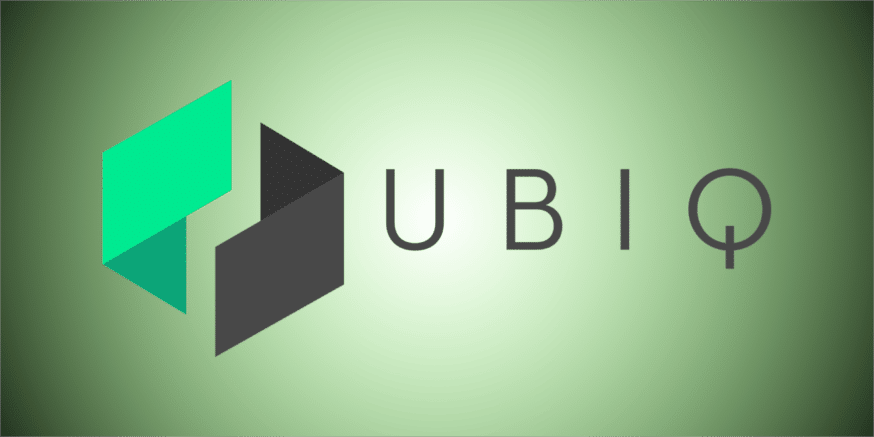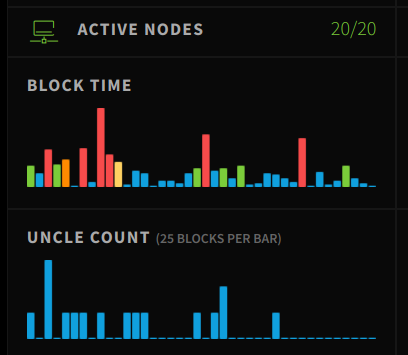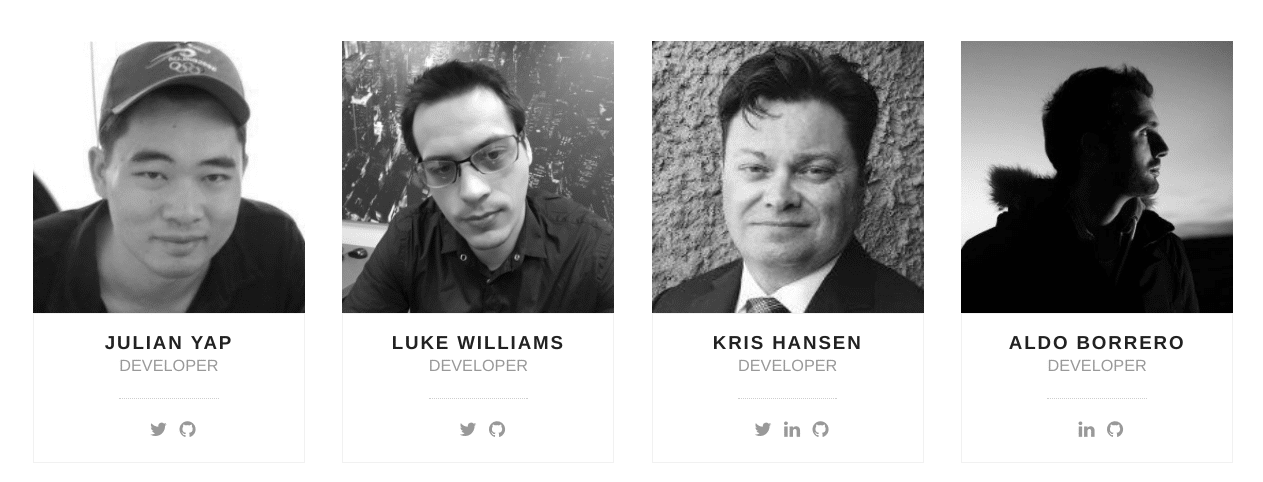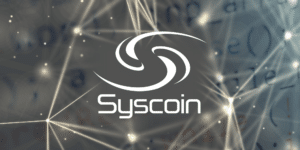- Ethereum Hard Fork
- Built for Enterprise Stability
- Network Stats
- Flux Difficulty Algorithm
- Uncle Blocks
- Ubiq Technologies Team
- Ubiq Token (UBQ)
- How to Buy Ubiq (UBQ)
- How to Store Ubiq (UBQ)
- Conclusion
What is Ubiq?
Ubiq is a hard fork of Ethereum that’s completely separate from the Ethereum ecosystem. It runs a slightly modified version of the Ethereum blockchain and implements the Ethereum Virtual Machine for smart contracts and DApps.
The project is still rather small. It launched without an ICO, and its token is a port of the old Jumbucks token. Since there was no token sale, the UBQ token has been available on the exchanges since shortly after the genesis block. It replaced the deprecated JBS token.
The Ubiq team felt the need for a fork of Ethereum that offered more stable and predictable versioning. Most projects in the blockchain space are currently under heavy active development, including Ethereum. These development changes mean that code, contracts, and DApps could stop working or have bugs introduced as Ethereum upgrades to a new version.
Ubiq prioritizes stability and methodical, bug-free upgrades. This is important for enterprise applications where a constantly changing platform is a technology risk. Companies using Ubiq smart contracts can be sure that their contracts will continue to function properly whenever new upgrades enter production.
The project is open source and led by a team of five experienced blockchain developers, all working on a not-for-profit basis.
Ethereum Hard Fork
Much of Ubiq’s code is identical to the code behind Ethereum. It’s a hard fork of Ethereum version 1.5.8. While there are a few key changes and edits, including the removal of references to the DAO, for the most part Ubiq is an Ethereum clone.
Where Ethereum has the ETH token, Ubiq has UBQ. Users pay contract gas and transactions fees in UBQ, and they can also use it as an exchange of value. The Ethereum Virtual Machine works in much the same way on Ubiq. You write the contract in Solidity and execute it in a similar manner to Ethereum.
[thrive_leads id=’5219′]
Ubiq also uses its own version of popular Ethereum wallets and other tools. The advantage is Ubiq has not grown to the size or popularity of Ethereum, so its gas and fees are orders of magnitude lower than Ethereum’s at the moment. You can execute all the same applications on Ubiq as you can on Ethereum, but for much cheaper.
Of course, the same could be said for Ethereum Classic, the original hard fork of Ethereum after the DAO attack. However, Ubiq has differentiated itself in a few other ways as well.
Built for Enterprise Stability
The core of the Ubiq project is providing a stable, predictable blockchain to host an Ethereum Virtual Machine. This predictability is important for businesses. Since Ethereum is under constant development and has multiple forks in its upcoming roadmap, many businesses are hesitant to build atop an evolving platform.
Ubiq’s developers insist on a reliable platform. The blockchain shouldn’t have sudden changes that affect the way it functions. Users in finance and enterprise can rest comfortably knowing that any change to the Ubiq blockchain will be pre-planned, community-led, and bug-free before reaching production. This mitigates a lot of governance, risk, and compliance concerns that companies have with blockchain right now.
Ubiq conducts extensive research on the blockchain ecosystem, looking for the most stable technologies currently available. They thoroughly test each new idea and debug it completely before it’s added as an update to the blockchain.
The focus on stability is admirable and needed in the fast-changing blockchain space. However, thus far, Ubiq has not seen much significant adoption from enterprise applications. In addition, its network is still currently too small to be considered very secure. As a result, enterprises considering the switch to Ubiq would be trading one technological risk for another.
Network Stats
Ubiq’s average hashrate sits around 350-400 GH/s. That makes it a fairly small network. For comparison, Ethereum’s average hashrate is around 240,000 GH/s.
On average, a miner finds a new Ubiq block every 88 seconds. Transaction times are quick on the network, with results showing up in seconds and confirming quickly with a fast blocktime. Of course, this is the case because Ubiq has a fairly low transaction volume. When I checked today, Ubiq had some blocks in the past ten minutes with no transactions at all. All the blocks had fewer than ten transactions.
The mining reward is 7 UBQ for a successful block. This decreases every year. However, Ubiq’s money supply is uncapped. This differs from the monetary policy of most cryptocurrencies. Instead, Ubiq implements a consistent inflation rate for currency production. The rate began at 7.3% per block but it will gradually decrease down to 0.7% over the next eight years.
The benefit of an inflation-based model is there will always be a reward for mining. With other cryptocurrencies, when they reach the hard cap of tokens, miners will turn to a fee-only revenue model. Miners will make all their money off fees, and there will be a strong incentive to charge higher fees on the network. Buy leaving the money supply uncapped, Ubiq guarantees miners that there will always be a system-generated mining reward.
Flux Difficulty Algorithm
One area where Ubiq implements brand new code unique to the Ubiq platform is difficulty adjustment. As miners enter and leave the network, processing power fluctuates. At times the difficulty level may be too easy, and the block time will drop below the 88 second target block time. Other times, the difficulty may be too hard and the block time will slow down past 88 seconds.
There are many difficulty adjustment algorithms in blockchain for solving this problem. However, some work better than others. They can create a lot of volatility in block time. Ubiq’s Flux Difficulty Algorithm seeks to smooth out the volatility. So far, it has been successful in network tests.
Above, you can see the first 10,000 blocks of Ubiq. Clearly, there are three types of patterns in the graph. The first is the original algorithm ported over from Digibyte. You can see a lot of volatility. Second, is a modified version of the Digibyte algorithm. Finally, the third section is the new Flux Difficulty Algorithm.
Uncle Blocks
Sometimes two miners discover a block at close to the same time, before they can find out about each other. The miner who finished first is the winner. The block the second miner created is called an “uncle block.” It’s technically valid, but, at least on most blockchains, it gets orphaned because it wasn’t first.
The first miner to finish wins the block reward, but the miner of an uncle block also gets a reward. On Ubiq, this reward is 50% of the block reward. However, once a new block is found, someone can no longer create an uncle block on the older block.
Ubiq also implements an incentive for miners to incorporate valid uncle transactions into the new block. A mine who incorporates an orphaned uncle block receives the 1/32 of the current block reward.
Ubiq Technologies Team
There was no token sale at the beginning of the Ubiq project, so there’s no official development budget. Everything is open source and community driven. The founding team had to purchase UBQ the same as any investor.
In addition, the founding team started a private company, Ubiq Technologies Inc., to serve as a funding vehicle for future platform development. The company provides consulting and partnerships for enterprise businesses to get started with blockchain.
Julian Yap leads the Ubiq team. He worked on projects with Bittrex, Blocktech, and Decred prior to starting on Ubiq. His formal training is as a systems engineer. The remaining team members are all developers with various experience in blockchain technology and software development.
Ubiq Token (UBQ)
The UBQ token began with the transfer of value from an existing token, Jumbucks (JBS). That token is now deprecated, and UBQ took on its account balances and transaction history. Jumbucks originally ran on a proof-of-stake independent blockchain. UBQ runs on the Ethereum Virtual Machine that is based on the Ubiq blockchain.
UBQ had no ICO or premine. The developers believe this was the best choice for creating a true, community-led platform. They also avoid the regulatory hurdles associated with raising funds through a token sale.
How to Buy Ubiq (UBQ)
If you want to buy UBQ, you’ll need to own Bitcoin first. There is no fiat gateway of UBQ, and Bitcoin is the strongest trading pair available to purchase UBQ.
90% of all UBQ orders take place on Bittrex. That’s probably the easiest place to buy UBQ once you own BTC. UBQ/BTC is the only trading pair available on Bittrex.
Cryptopia also offers UBQ in trading pairs with BTC, LTC, and DOGE. However, the volume on LTC and DOGE is so negligible that you’d be lucky to get an order through at a fair price for one of those currencies. Stick to BTC.
How to Store Ubiq (UBQ)
UBQ uses its own version of popular Ethereum wallets.
- Pyrus is UBQ’s web wallet. It’s a fork of MyEtherWallet and works in the same way.
- Fusion is the GUI desktop wallet. It’s a fork of Ethereum’s Mist wallet.
- The Ledger Nano S also supports UBQ, making it a great hardware option.
Conclusion
The idea of stabilizing blockchain technology for use in the enterprise is a good one. However, it’s not clear how much actual progress Ubiq is making toward that goal. With few partnerships and a slow development timeline, it’s tough to tell how this project will turn out. If you’re considering investing in Ubiq, you’ll need to decide if it is different enough from Ethereum and making enough progress to warrant the investment.
Never Miss Another Opportunity! Get hand selected news & info from our Crypto Experts so you can make educated, informed decisions that directly affect your crypto profits. Subscribe to CoinCentral free newsletter now.















